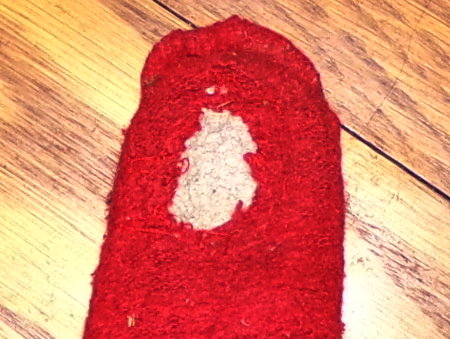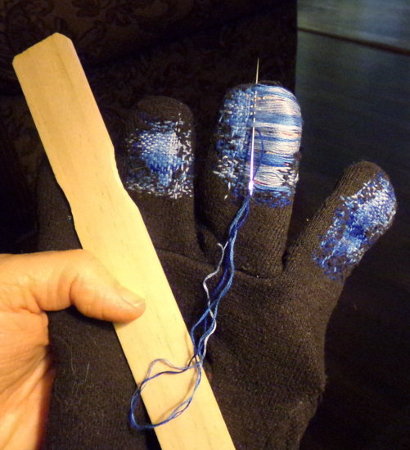I'm still darning and patching my way through a pile of socks, but I took some time out to mend my work gloves. They badly needed repair!
My winter chore gloves are actually two pairs. The outer gloves are lined cotton work gloves, and the inner gloves are a fleecy fabric glove. If I wear only one or the other, my hands are cold. But when I wear them together, they keep my hands warm. However . . .
I decided to patch the hole in the lining and darn the outer shell holes
with embroidery thread. For the patch, I used one of the
too-far-gone socks that I cut into rags.
I didn't worry about finishing the edges or making it pretty.
I just did the job, making sure the unfinished edges were sewn down. To darn
the other holes, I used two strands of embroidery thread and a paint stirrer
as a darning board.
The paint stirrer worked quite well, giving me a firm surface for weaving
the threads to make the darn.
It was a lot to do, and it's not perfect, but the variegated blues of the
embroidery thread made it fun and the darns sort of match the inner gloves.
Plus, I didn't have to throw them away and spend money on new ones. Best of
all, my hands are warm again!
If I'd used dark brown embroidery thread, the darning would be almost
invisible. But the latest trend is "visible mending," which creates
beautiful decorative elements from holes, stains, and tears; very fun. More
on that in upcoming posts. For now, I'll close with a link to a page on the
Collingwood-Norris website, "Visible Mending: Gloves." Lots of creative ideas there. ❤


















